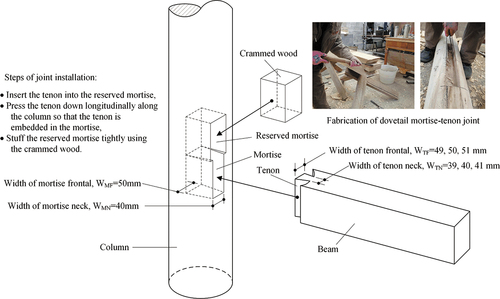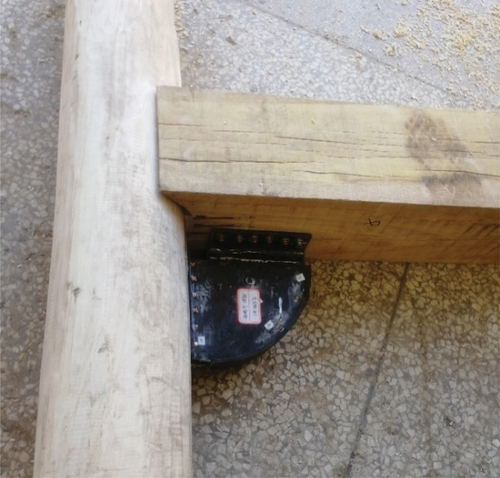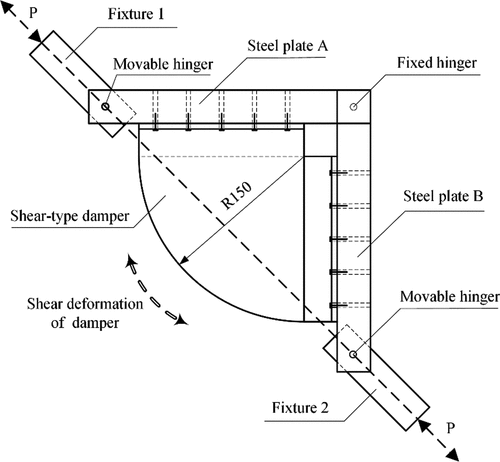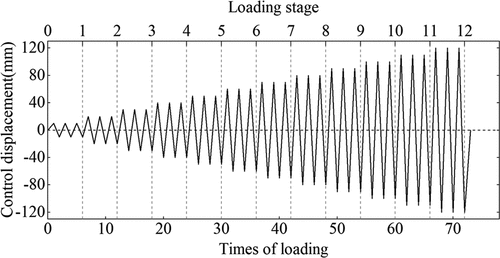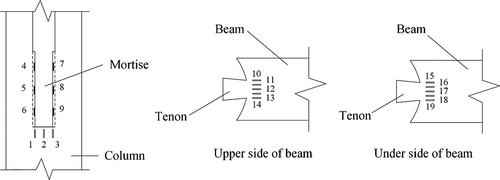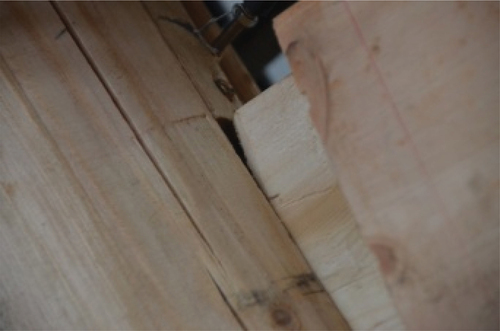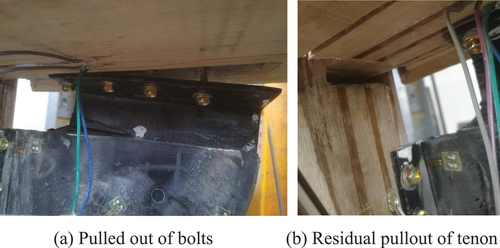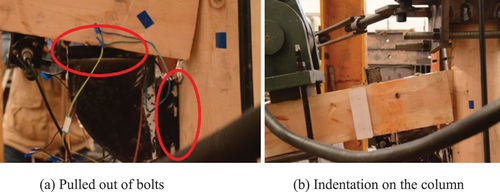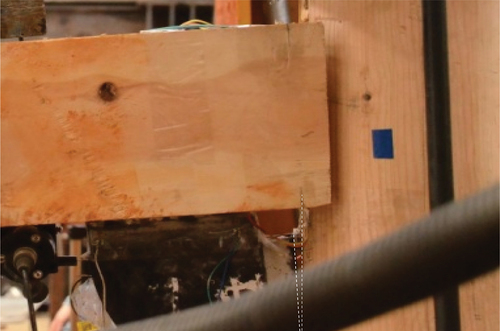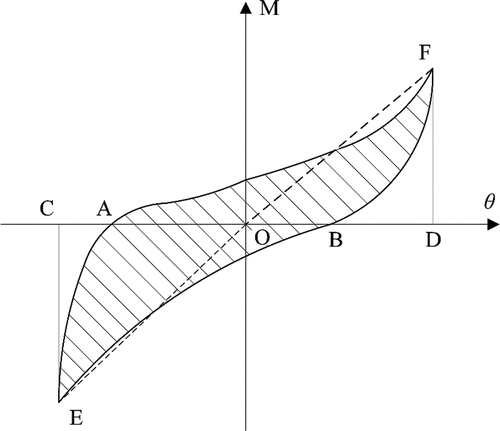Figures & data
Table 1. Details of specimens.
Table 2. Material properties of Canadian hemlock.
Table 3. Material properties of damper.
Figure 5. M-θ hysteretic loops of the three damper specimens (a) Deformation characteristic curve (b) Frequency characteristic curve (c) Fatigue characteristic curve.
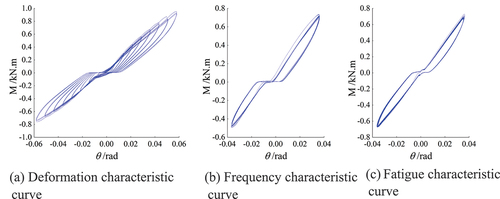
Figure 6. Wood joint test setup (all dimensions in mm) (a) Test design (b) Overview of the test setup.
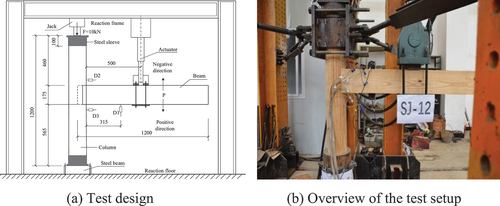
Figure 9. Failure mode of SJ-22 (a) Deformation of tenon neck on the upper side (b) Deformation of tenon neck on the lower side.
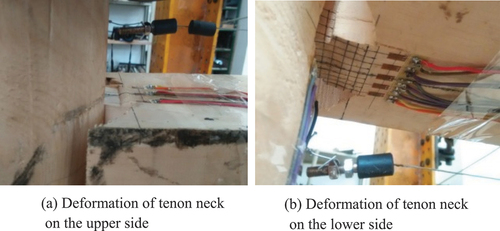
Figure 10. Failure mode of SJ-21 (a) Deformation of tenon neck on the lower side (b) Deformation of tenon neck and tenon forehead on the upper side.

Figure 15. Comparison of hysteresis curves between joint models (a) Loose joint (b) Moderate joint (c) Tight joint.

Figure 16. Comparison of the M-θ skeleton curves between the joint models (a) Loose joint (b) Moderate joint (c) Tight joint.


